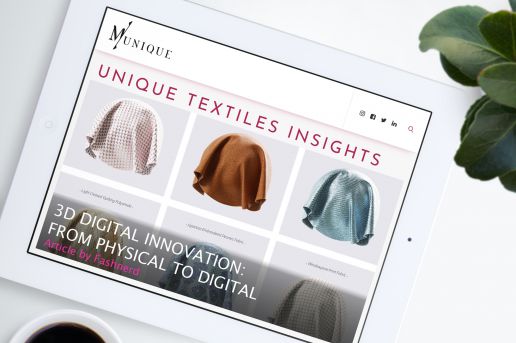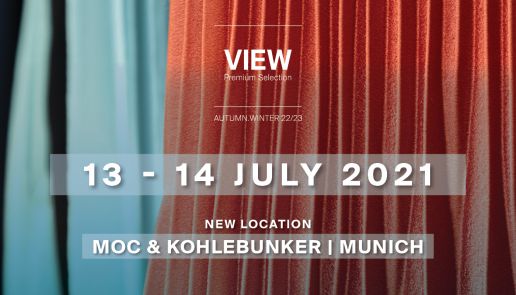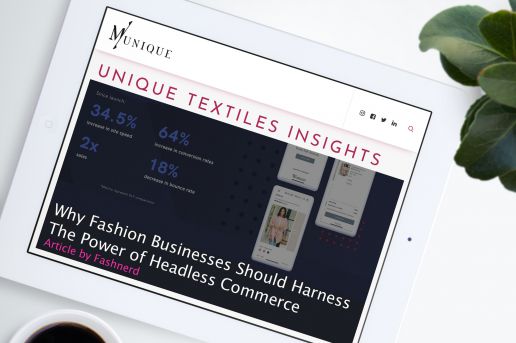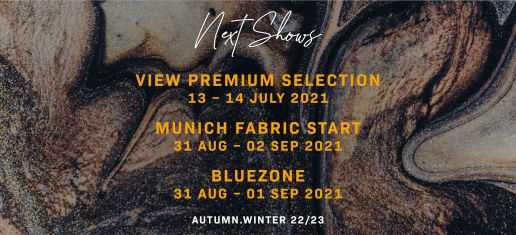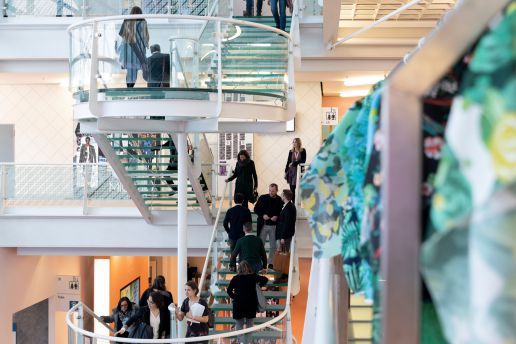Fashion
Season Starts in Autumn 2021
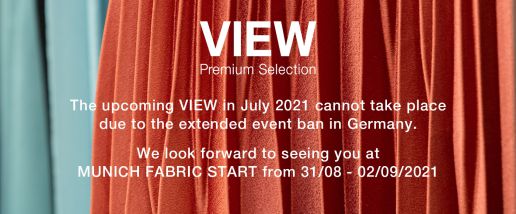
Against the backdrop of decreasing infection numbers in Germany as well as across Europe and with a step- by-step ease of current measures in sight, the chances for VIEW Premium Selection from 13 – 14 July 2021 have been very good. The response from the industry has been enormous, the demand for the Preview Textile Show is high: VIEW is fully booked in the new location with more than 230 international textile and accessory manufacturers!
Despite this positive situation, the Bavarian government has extended the current ban on events beyond 14 July 2021. Unfortunately, this regulation has a direct impact on the trade fair planning for VIEW Premium Selection. Authorities will not grant the necessary permit for VIEW in mid-July. Therefore, the organisers have no other possibility than to cancel their next VIEW Premium Selection.
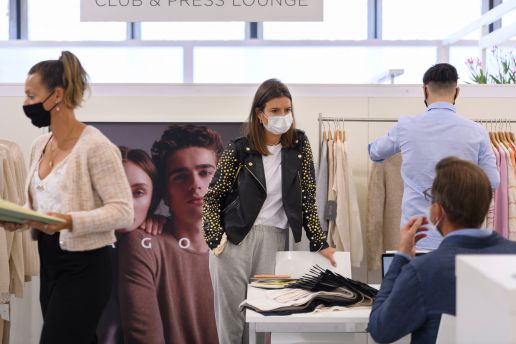
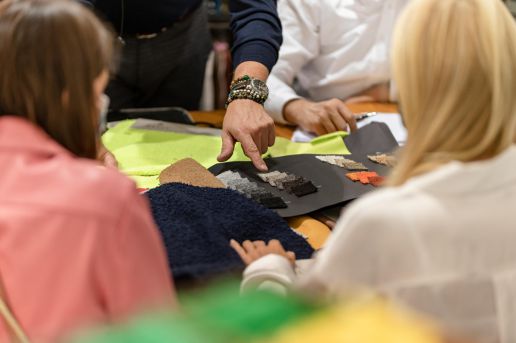
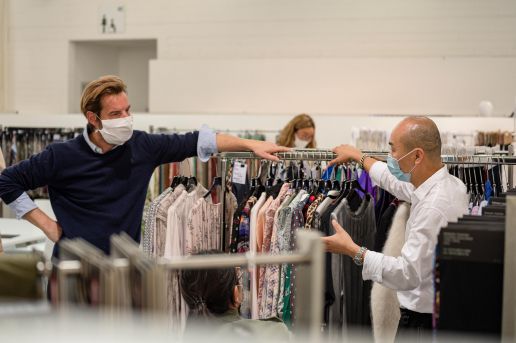
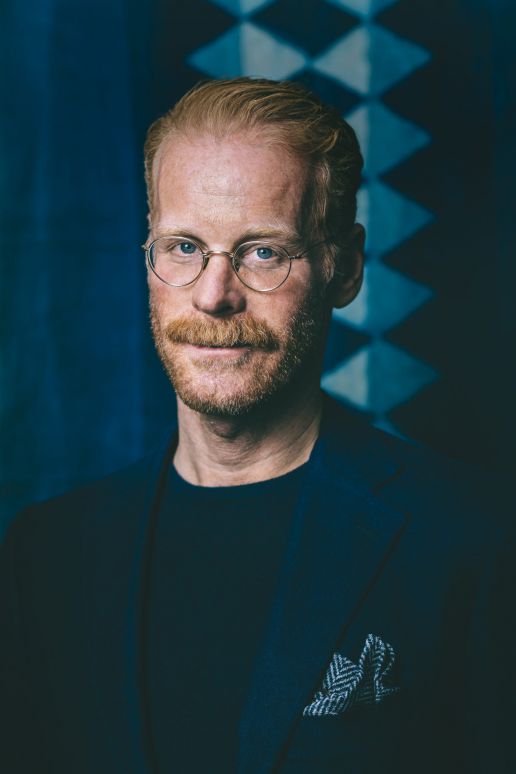
“This decision hits us and the entire industry very hard after almost a year without physical trade shows. However, it is irreversible. Despite a close exchange and repeated follow ups with the corresponding authorities, it was not possible to secure the official approval or exemption for VIEW. We have invested a lot of work, effort and good faith in the preparation of VIEW in order to meet the current regulations for a Covid-19 compliant event with solution-oriented measures. Our planning has been further confirmed by the current developments and declining infection numbers. Given this overall situation, the decision taken by the authorities is especially hard to accept.”
Sebastian Klinder, Managing Director Munich Fabric Start
The organisers had decided early on to move the VIEW Premium Selection to the spacious MOC Munich as part of the Covid-19 compliant implementation of a trade event. With a detailed satellite concept for the different areas and outdoor catering areas, the organisers were well prepared for the current requirements.
Go for MUNICH FABRIC START and BLUEZONE
Now, in accordance with this decree from the Bavarian Ministry of State, the organisers are focusing all of their energy on the upcoming MUNICH FABRIC START from 31 August – 2 September 2021 as well as BLUEZONE from 31 August to 1 September 2021.
In short, this means: Green light for the realisation of the International Textile Trade Show MUNICH FABRIC START and the International Denim Trade Show BLUEZONE!
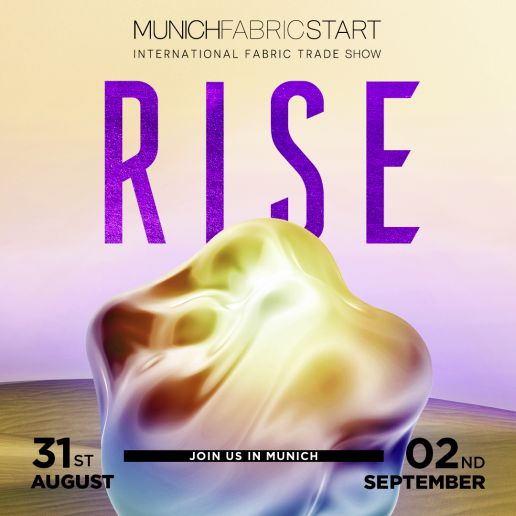
MUNICH FABRIC START
31/08 – 02/09/2021

BLUEZONE
31/08 – 01/09/2021
“We are now concentrating twice as hard on the further organisation of the upcoming MUNICH FABRIC START at the MOC Munich and BLUEZONE on the Zenith grounds. Here, we are doing everything we can to once again provide the industry with the usual portfolio and services that people expect from us. We are incredibly excited to be able to return to a bit of normality despite and with Covid-19: at least at our trade fairs in Munich.”
Frank Junker, Creative Director Munich Fabric Start
The organisers’ aim is to once again present the established international premium portfolio at the MOC for the following segments at MUNICH FABRIC START: Fabrics, Additionals, Bluezone, Keyhouse, Design Studios, Sourcing, ReSource and Sustainable Innovations. At BLUEZONE, trade visitors can also expect the proven spectrum of international denim weavers and manufacturers at the Zenith Area together with a newly staged innovation hub with Keyhouse.

Towards 3D Digital Innovation
3D Digital Innovation: Transitioning From Physical to Digital
AN INDUSTRY INSIGHT BY FASHNERD FOUNDER MUCHANETA KAPFUNDE.
As business practices in various sectors adjust to accommodate digital innovation, the textile industry has also started to shift direction. Driven by the growing need to rethink the industry’s approach to design, development and manufacturing, the textile business has finally started to turn to digital technology to help solve some of its industry-specific difficulties and complexities.
Under pressure to innovate, I am excited to witness 3D digitalisation finally taking centre stage in the textile industry. Propelled forward by the brand-new digital wave, textile businesses are setting new standards to future-proof the sector. Rethinking how they operate, more and more textile businesses are becoming less afraid to explore the benefits of transitioning from physical to digital. The majority are doing this by examining the advantages of merging textiles with digital experimentation. So, what exactly is 3D digital technology offering an industry notorious for being resistant to change?
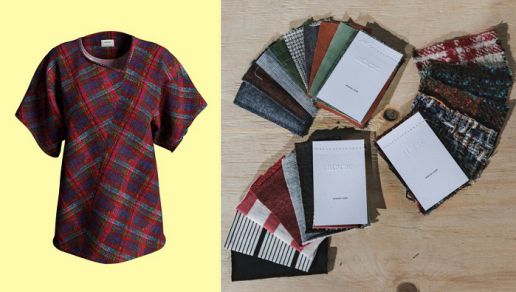
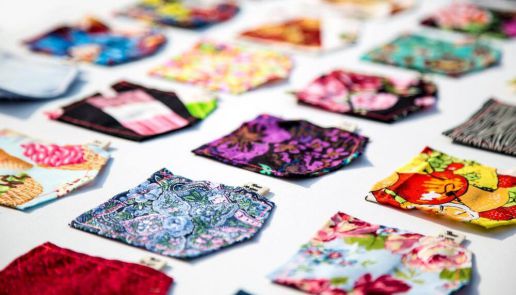
The Digitisation of Fabrics, A Powerful Asset?
Modern technologies are proving to be an influential asset when it comes to playing an integral part in changing the dynamics of the textile industry. With the potential to give textile businesses a competitive edge, we are starting to see 3D digital innovations being highlighted at textile trade shows, which, in my opinion, is a step in the right direction.
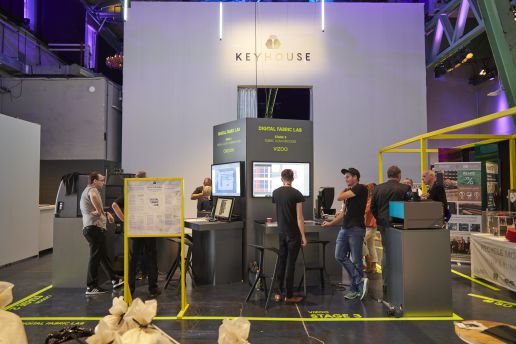
This is an opinion formed while frequenting various textile trade shows. As a regular visitor I am familiar with physical swatches. Now imagine if I, as a visitor (or customer), could access the digital twin of a piece of fabric along with its physical swatches. This concept was introduced at Munich Fabric Start (MFS) trade show during their 2019 edition of KEYHOUSE.
The Munich based trade show showcased fabric suppliers offering a digital twin alongside physical swatches. Partnering up with Digital Fabric Lab, they demonstrated the individual steps of fabric digitisation and how textile businesses can create a realistic image of digital fabric samples. The key takeaway was that physical no longer needs to be the master copy. More recently, in 2021, MFS invited attendees to indulge in 3D digital fabrics and trend inspirations showcased at their DIGITAL TREND SPACE.
PHYSICAL NO LONGER NEEDS TO BE THE MASTER COPY
Another digital platform making it possible to digitise fabric is Esmetex. “We aim to simplify the fabric development process; no more looking through swatch boxes and shipping swatches back and forth“, said the founder of Esmetex, Victor Chao, to Apparelresources.com. Adding:
“It is not practical for a designer to search through 18,000 fabric swatches when Frontier® can search based on whatever criteria the user is interested in and return all relevant fabric information on one page. This can be done on a desktop, laptop, tablet or smartphone by accessing our website or by installing our app.”
Chao is not alone in trying to help the textile industry move with the times. Emily Croneberger, manager marketing and industry programs, Cotton Inc, said in an interview:
“Digitising the fabrics is our first step in keeping cotton in a digital landscape”. She continued: “We have committed to creating an online digital library of our fabrics, free for download and use by brands, mills and accounts. We plan to move forward in promoting and expanding our digital assets.”
Although it is unlikely that physical samples will become a thing of the past anytime soon, the digital twin of fabric offers some advantages, like storing all fabric data in one central place. It is also worth taking note that solutions offered by digital material platforms like Swatchbook, also make it easier to verify the physical textiles’ authentication. For those attending shows, this type of tech solution makes viewing the fabrics more effortless while helping textile businesses be less wasteful when it comes to physical material samples and swatches.
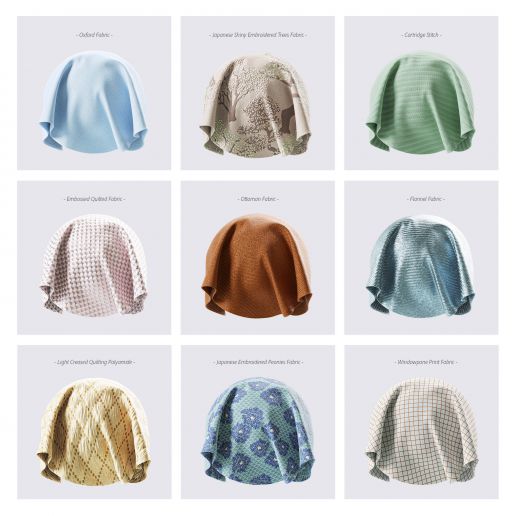
The Wonder Of Digitally Transformed Fabric
As industries transform to meet global changes, we have seen a rise in the adoption of newly emerging technologies. It is these genius ideas that have allowed the textile industry to take material digitisation to the next level. By hybridising the physical world with the digital one, textile companies that once relied on physical meetings at trade shows are now turning to innovative textile technologies to help them digitally transform their fabric during the global pandemic. One of these solutions is Scanatic™ Nuno Fabric Scanner provided by tg3ds.
Digitally powering the textile industry, the tg3ds studio uses an intelligent imagery processing engine to capture 3D texture display properties of fabrics in the smallest digital footprints. Another solution provider is Twinbru. They have made a name for themselves by setting an industry standard when it comes to making it possible for digital fabrics to be used in all virtual settings, like AR, VR and even game design.
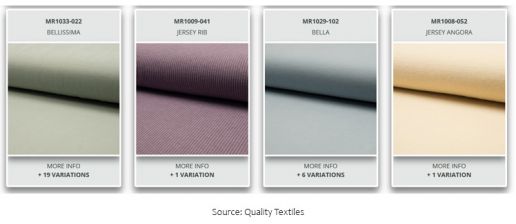
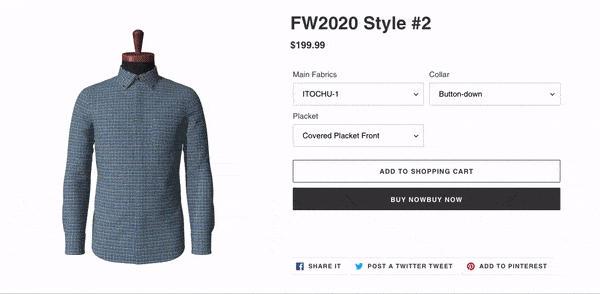
Ready for Limitless Possibilities?
When the world of “all things digital” merges with one of the oldest industries, you know it’s time to stand up and take notice. If you are a fabric mill, a garment manufacturer, or a textile brand, now is the time to leave outdated methods behind and transition your product from physical to digital. For example with help from companies like CLO Virtual Fashion, who can accurately emulate drape-sensitive fabrics such as lightweight wovens and jerseys with various material properties, more on this here. Yes, there are still imperfect kinks to the technology, like not being able to mimic complex behaviour of materials, but that does not make innovations like 3D Digital plan B; it should always be ‘the plan’.
So why embrace digital transformation? If you want to become faster, more relevant and more cost-efficient, now is the time to capitalise on all the possibilities that digitalisation offers. Yes, some might argue that the technology is not industry-ready enough to replace physical samples with virtual ones, but we can all agree that a new textiles economy is arising, and it makes sense to be a part of it.
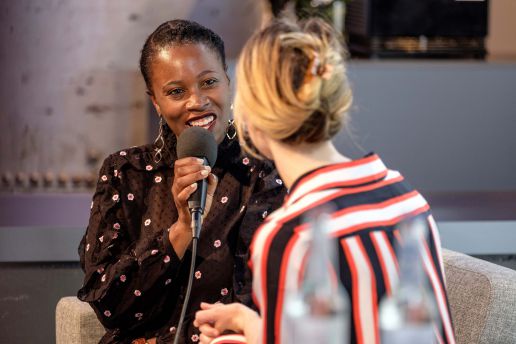
ABOUT THE AUTHOR
Founding editor-in-chief of FashNerd.com, Muchaneta has worked in the fashion industry for over 14 years. She is currently one of the leading influencers speaking and writing about the merger of fashion with technology and wearable technology.
Muchaneta Kapfunde | editor@fashnerd.com
Change of location for VIEW Premium Selection
Personal exchange and the haptic experience of materials is particularly important in our industry. Which is why we are all the more looking forward to implementing a physical platform again, with and for the industry.
With a healthy mix of confidence and realism, we started planning the trade fairs in the coming summer months and we can’t wait to welcome you at VIEW Premium Selection from 13 – 14 July 2021 in MOC Munich and in Coal bunker on the Zenith site.
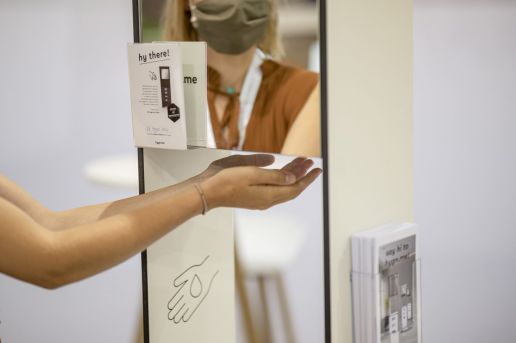
Our highest priority: your security! We keep a very close eye on current developments and continually assess the options and requirements for physical trade fairs in times of a pandemic. The most important prerequisite is that our trade fairs can take place safely, smoothly and compliant with Covid-19 for our visitors and everyone involved.
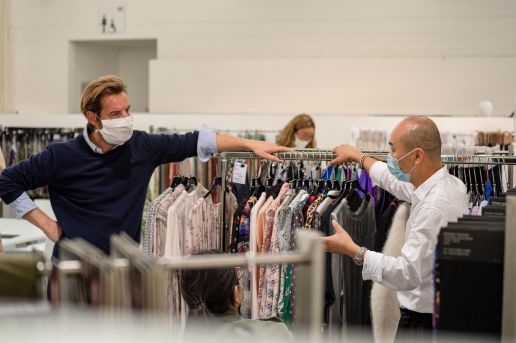
One-time change of location of VIEW Premium Selection
After carefully examining the needs, options and applicable Covid-19 measures, we decided to organise VIEW Premium Selection from 13 – 14 July 2021 – one week after Frankfurt Fashion Week – in the MOC and coal bunker on the Zenith site.
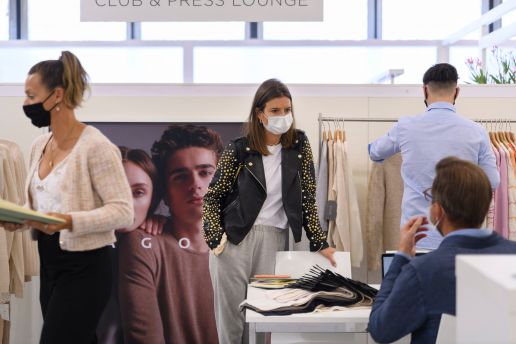
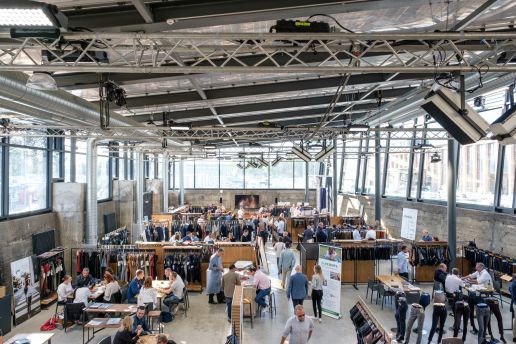
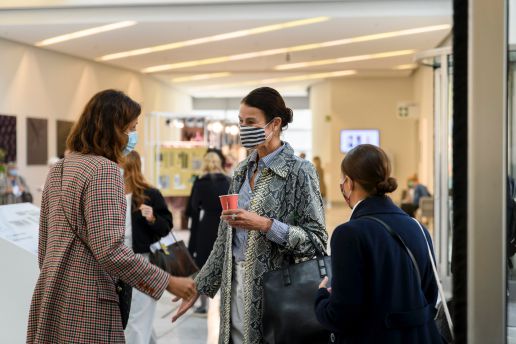
With this one-time change of location, a trade fair in compliance with the necessary requirements for Covid-19 is possible: Besides a spacious venue and outside area, generous stand and catering areas, wide walking paths to maintain the minimum distances, good infrastructure, sufficient parking spaces, nearby accommodation as well as efficient ventilation systems with fresh air supply are provided here. Therefore, the complete trade fair event is located in one place.

The traditional VIEW summer feeling awaits you in the outside area of the Drivers Club, which connects the MOC with the Zenith area. Of course, we will offer our usual services such as trend forums, café bars and free lunches in order to be able to offer you the familiar atmosphere of VIEW.
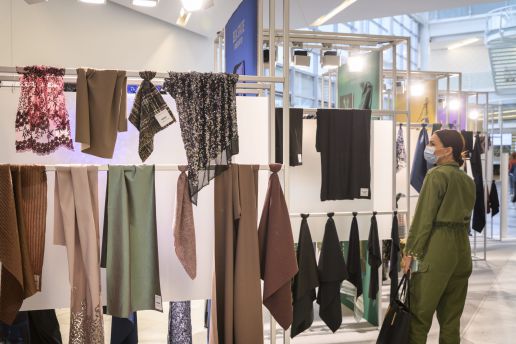
Rediscover the well-known VIEW premium portfolio
The spacious area offers the possibility of realising VIEW as a satellite concept. We are planning to spread out the individual exhibition areas from one another in order to separate the trade fair across this spacious area.
You will find the areas FABRICS, ADDITIONALS and DESIGN STUDIOS in Atrium 4 in the MOC and the areas DENIM & SPORTSWEAR in Coal bunker on the Zenith site.
All detailed information can be found in the information brochure:
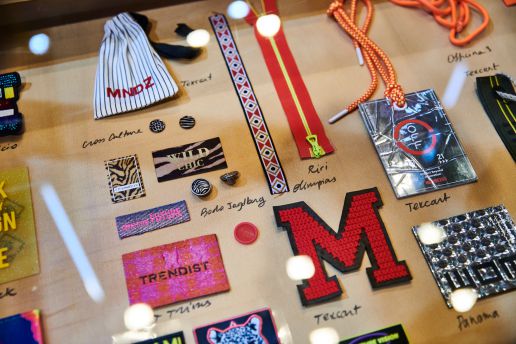
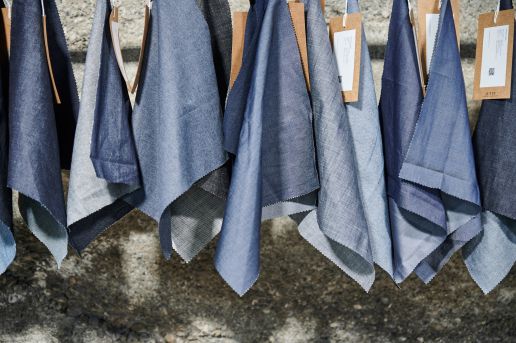
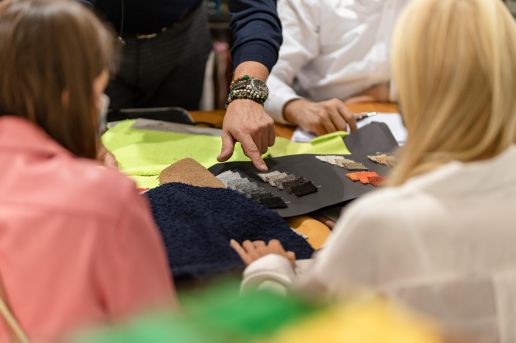
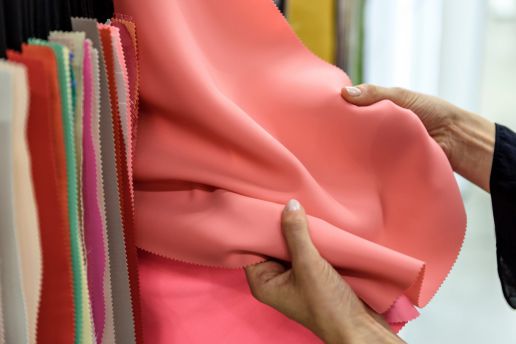
Only with solidarity and loyalty can we realise our common goal for the industry – which is why we hope for your trust and support and we are glad to hear from you at any time if you have any further questions.
VIEW Premium Selection Autumn.Winter 22/23
13 July 2021 · 9.30am – 6.30pm
14 July 2021 · 9.30am – 5.00pm
Location:
MOC Munich & Coal bunker (Zenith Area)
Lilienthalallee 29/40
80939 Munich I Germany
Contact:
Phone: +49 (0)89 45 22 47 0
visitor[AT]munichfabricstart.com
The Power of Headless Commerce
Why Fashion Businesses Should Harness the Power of Headless Commerce
ARTICLE BY MUCHANETA KAPFUNDE, FOUNDING EDITOR-IN-CHIEF FASHNERD.COM
In today’s world, it is hard for any industry to ignore the explosion of innovation, let alone the growth of its adoption. Even the fashion industry, which has always been hesitant to invest, started in 2020 to seriously take note when it became apparent that the fashion industry’s overall health was now reliant on its ability to adapt to new ways of doing business. Switching to survival mode, brands and retailers, especially those who have been dealt a tough hand due to the pandemic, started diving into innovations designed to get them back on track. One of these best-in-class technologies is headless commerce.
Born from what RetailDive described as “retailers’ struggle to create an online purchasing experience that was consistent with the slick marketing customers were used to seeing”, headless commerce has been proving to be more than just another buzzword. Although it has been acknowledged by luxury labels like Lancome and Michael Kors, who are using the solution to run their eCommerce stores, the question remains, what is headless commerce?
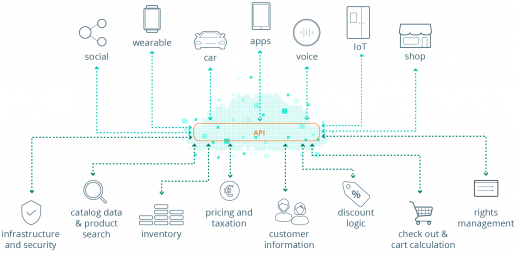
The Rise of Headless Commerce
For some businesses, it was the enforced disruption of 2020 that brought headless commerce to their attention. If you are hoping to take advantage of what headless commerce can bring to the table, you need first to understand what the solution is. The idea behind Headless is pretty simple. It is the decoupling of the front-end and the back-end of a brand’s e-commerce solution. The front-end is what your customers see when they are interacting with your store. The back-end, which is responsible for all of the functionality, is what the customer never sees.
Now, most e-commerce solutions have their back-end and front-end coupled, which means that any changes requiring a developer to configure code to account for those changes – turning a small project into a big one; and this is when headless commerce comes in. Shaneil Lafayette, Commerce Technology Advocate and Data Analyst, explains: “Headless commerce is a solution that allows you to innovate and add new customer touchpoints without ever having to worry about messing about functionality in expectations”. Adding: “You can add new and personalised commerce experiences to keep up with customer expectations”.
Not an entirely new approach, Nacelle, a company that helps businesses create next-gen web stores by offering headless functionality as a solution, defines headless commerce as an innovation that allows retailers to scale their e-commerce business. More technically, headless commerce is “the decoupling of a website’s front-end from the back-end and implementing an API architecture that enables making fluid changes to the site’s content and user interface elements without affecting the back-end”, according to Algolia, a search-as-a-service platform.
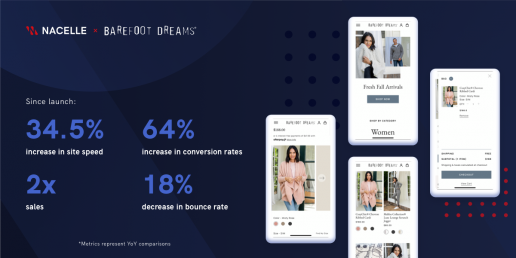
Although brands like Oliver Bonas, Etsy, J.Crew, and ASOS are adopting headless solutions, some brands and retailers are still trying to understand why this ‘future-proof’ package is on the rise. One argument offered by ‘Content And Commerce: The Odd Couple Or The Power Couple?’ authors Stephen Powers and Peter Sheldon is: “It is no longer enough to enable an online catalogue and transactional e-commerce.” A valid point. So taking it one step at a time, to understand why headless is on the rise, I think one needs first to understand the difference between traditional commerce and headless commerce.
Traditional Versus Headless
Before pointing out the difference between traditional or headless, allow me first to say, although headless commerce has its advantages, traditional e-commerce website solutions are always great for those starting or those looking for an easy setup that requires less financial investment. But if you are past that stage and want to take the next step, then headless commerce could be the progressive solution that makes it easier for your business to present experiences and test new strategies.
Let’s start with the front-end. It has been said that when it comes to the front-end, traditional commerce platforms have a reputation for having design constraints that limit developers. This hindrance is usually not experienced in headless commerce. That is not to say that headless commerce doesn’t come with its drawbacks, it does, but with perks that include advantages that enable front-end developers to create, from scratch, a user experience that fits core business needs, the benefits currently outweigh its limitations.
When it comes to customisation, the traditional commerce platform affords limited personalisation, while headless platforms offer developers the opportunity to create their own user experience. By this, I mean that headless commerce is built for customisation, which means that it is a solution that makes it easier for you to rearrange your store or change content as and when you need to.
Ready To Be Free From Traditional Shackles?
Joe Cicman, a Forrester Senior Analyst, once said: “If you rewind the clock to the pre-headless days, you could spend millions of dollars figuring this stuff out for yourself”. The good news is that experts at Amplience have come up with a playbook that offers fashion businesses an opportunity to break down traditional barriers. Supporting headless commerce as an innovative solution, Amplience’s playbook explains the whys, what’s, and how to go headless.
Still wondering if you should get in on the action? Let’s go through some advantages of adopting this modern commerce architecture. It is a solution that gives you the ability to deploy, scale and provide an accurate omnichannel approach. As Harvard Business Review research revealed, this is important because omnichannel customers spend 4% more in-store and 10% more online than single-channel customers. Also that 73% of consumers use more than one channel during their shopping journey.
Another advantage of going down the headless route is the faster speed to market aspect, a must in an industry that thrives on speed and agility. Also, headless commerce can help brands adapt quickly to market changes and implement recent UX changes, like adding new functionality without changing the back-end logic.
Lastly, the most significant advantage has to be headless commerce’s ability to make it possible to build a store that is tailored to a fashion business’ needs. Imagine being able to create an all-in-one-platform that is not a clunky and outdated operation but a seamless system that ticks all your boxes and allows your customers to experience your brand’s overall aesthetic with ease.
Let's Talk Challenges & Whether Headless Is a Best-of-Breed Solution for You
Considering some experts to be a long-overdue upgrade, should you decide to join the headless tribe, you won’t be alone. As I mentioned earlier, Michael Kors shifted to a headless architecture in 2016. The benefits for the American fashion label include streamlining their efforts to engage with mobile users. Also, in 2016 French luxury perfumes and cosmetics house Lancôme transitioned to headless to capitalise on its increased mobile traffic. Following their evolution, Lancôme reported a 36% lift in mobile revenue and an average order value increase of 11%.
Like any emerging innovation, headless commerce comes with limitations. Not a quick solution for every retailer, headless commerce’s initial build costs and times can be relatively high, not to mention the ongoing costs. This is probably why larger organisations have mainly adopted headless commerce with the resources to commit to it. Some smaller businesses have taken a step towards going headless because, in the long run, they are looking at the bigger picture and thinking long term when it comes to their expectations of ROI.
In the end, yes, headless unlocks opportunities, but it is not suitable for everyone. It is a solution that offers excellent benefits if you are looking to bring specific traits to your overall business approach. Still, before you commit, you need to ask yourself, do I want to increase conversions? With mobile-first on the rise, is now the time to optimise my store for mobile shopping experiences? Are modern tools the way forward for my business? If you answered yes to all three questions, then headless could be the solution to help you to scale up and grow faster. Solutions like Mobify, Prismic, Algolia, Magento 2, Shopify Plus and Core DNA could help you make the switch in gradual increments.
So as we propel towards a new retail age in 2021, the fashion industry has started to realise that the road back to “normality” is paved with complex and sometimes intimidating innovation. Joining the dots between digital and physical not only opens the industry to viable solutions that reduce the impact caused by COVID-19, but it is technologies like headless commerce that will help fashion brands and retailers grab a more significant piece of valuable market share that will allow them to thrive post-pandemic.

ABOUT THE AUTHOR
Founding editor-in-chief of FashNerd.com, Muchaneta has worked in the fashion industry for over 14 years. She is currently one of the leading influencers speaking and writing about the merger of fashion with technology and wearable technology.
Muchaneta Kapfunde | editor@fashnerd.com
Our Upcoming Shows
Our team is ready and excited to get back to doing what we love best: organising trade shows for you. With a healthy mix of confidence and realism, we look forward to the summer months ahead and look forward to seeing you again at our upcoming trade shows for Autumn.Winter 22/23:
VIEW Premium Selection: 13 – 14 July 2021
MUNICH FABRIC START: 31 August – 02 September 2021
BLUEZONE: 31 August – 01 September 2021
Working together with our industry partners, our team is committed to meet the wishes and market needs for physical events with this trade fair planning. Using the example set by our FABRIC DAYS event, which we successfully realised in September 2020, we will of course implement the upcoming trade fairs in a Covid-19 compliant manner, because our priority remains to ensure the safety of all those involved.
Our goal is to present the established, premium portfolio of MUNICH FABRIC START again at our show in September 2021: Fabrics, Additionals, Bluezone, Keyhouse, Design Studios, Sourcing, ReSource and Sustainable Innovations. Don’t miss your chance to meet your partners in person and connect with the industry at our shows. Event registration will be available in the weeks leading up to our show but get ready here and create your visitor login.
In the meantime, please take another look at our DIGITAL TREND SPACE with your latest material developments and our newly developed BLUEZONE Living Page – we are also currently working on a new homepage for MUNICH FABRIC START, which we will be launching soon.
7 Reasons Why You Should Continue Your Journey Despite The Pandemic
7 Reasons Why It Is Imperative You Continue Your Journey Despite The Pandemic
Article by Muchaneta Kapfunde, Founding Editor-in-Chief FashNerd.com
In these perilous times, there is no denying that the future of fashion has become uncertain. Fashion businesses, stuck between a pause and a pivot, are looking to digital, innovative and hybrid approaches to push their narratives forward. Open to new opportunities sprouting up, despite the pandemic, some fashion businesses are taking the “when life gives you lemons, make lemonade” approach, to overcome a crisis that shows no signs of stopping.
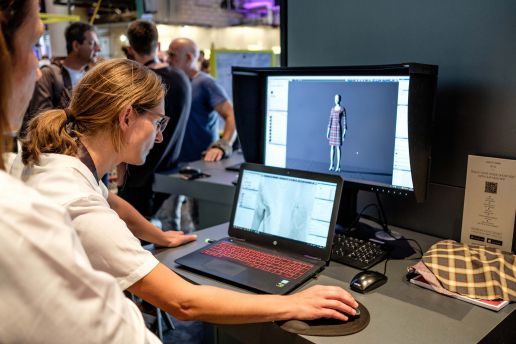
“Your body may be in quarantine, but your mind doesn’t have to be”
explained fashion designer Jeremy Scott when interviewed for Harper’s Bazaar. True, in an age where timing is everything, there are several reasons why continuing your fashion business journey during this very exceptional time is the way forward. Here are seven:
1. Take Advantage Of New Tools and New Ways of Working
It is time to adopt a more flexible mindset when it comes to technology-driven tools and finding new ways of working. Doing so will allow you to be more open to rewiring your creative development process, making navigating through troubled waters easier. Also, creating networks gives you access to resources that could help you strengthen your business and help you think outside of the box so you can welcome new tools and new ways of working with your team.
2. Now Is A Great Moment to Experiment and Try New Techniques
With social scientists making significant contributions to the field of fashion design research, this is a great moment to experiment and research new techniques that will assist you with your business. This could include finding new eco-friendly materials that you could use or using technological innovations capable of helping you design and manufacture your products more mindfully.
3. Sustainability and Consciousness Needs To Be Part Of Your DNA
The pandemic has drawn attention to why we need to have sustainability and consciousness embedded into our business’ DNA. Moreover, it has also shown that the future of fashion can no longer be built on putting profits ahead of people’s health and safety. The lesson here is that the ‘old way’ of doing business no longer works, instead steer your business strategy towards a more clean, safe, fair, transparent and accountable mindset.
4. Join The Conversation Addressing Economic and Manufacturing Realities
The emerging modern world is all about investing in tomorrow, which means that you need to think about economic and manufacturing realities. This will help you set realistic expectations in terms of product delivery and product credibility.
5. Access To Start-up Technology Innovation
From the idea of virtual showrooms to digitally produced samples and campaigns, the demand for start-up innovation is growing. The good news is that fashion businesses have more access to advanced technology than a year ago. Companies that are adopting innovation can reimagine a new direction and head towards it.
6. Transparency is Slowly Becoming The Norm
COVID-19 has highlighted the significance of brand transparency. Before the pandemic, being transparent was a choice; now, it is a necessity. Brands are currently being held accountable for their environmental practices, so the way forward would be to disclose your policies and commitments when it comes to social and ecological issues.
7. Represent The Next Normal
With so much going on, all businesses should be driven by a need to make a positive contribution to the decision-making process that will shape the future of fashion. Doing so will differentiate you from other fashion businesses and prepare you for what is most likely going to be the next normal.
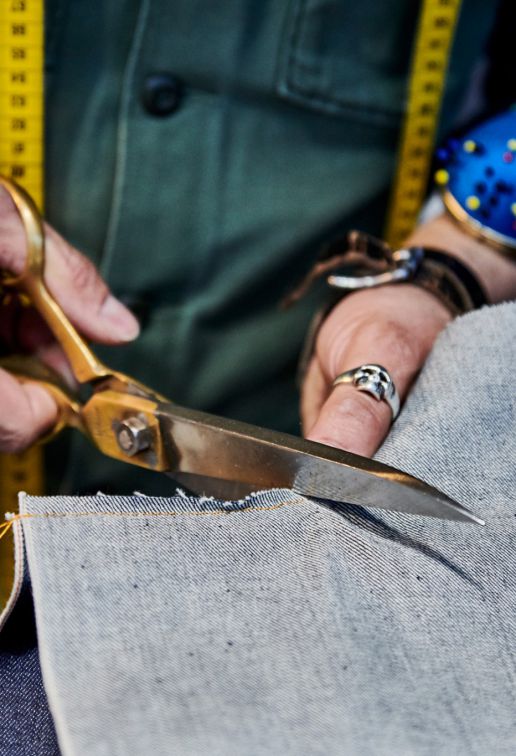

OPENING TIMES
2. MARCH 2021 · 9:30 – 18:30
3. MARCH 2021 · 9:30 – 18:30
4. MARCH 2021 · 9:30 – 16:00
LOCATION
MOC Munich | Halls 1 – 4 Groundfloor
Lilienthalallee 40
Germany, 80939, Munich
We’d Love To Host You Again Soon

As a partner of the industry, we would like to offer you a perspective and provide a platform with optimal conditions as quickly as possible. We hope to see everyone in Munich again soon. We are currently doing everything we can in order to achieve this.
And when we say “we”, we mean the strong community of all our lovely exhibiting brands and manufacturers, the inspiring visitors coming from around the globe and the whole team of ours. Stay strong and above all healthy – it is only together that we can master this challenge.
Ask The Experts
Taking into account the focus on sustainability and innovation driven by THRIVABILITY, a new information concept has been integrated into the Trend Forum at the MUNICH FABRIC START Spring.Summer 21. At various communication islands in the foyer of the MOC, industry experts have provided impulses and answers to current questions, from the origins of the material to exploring the diverse range of production processes and end garment recycling.
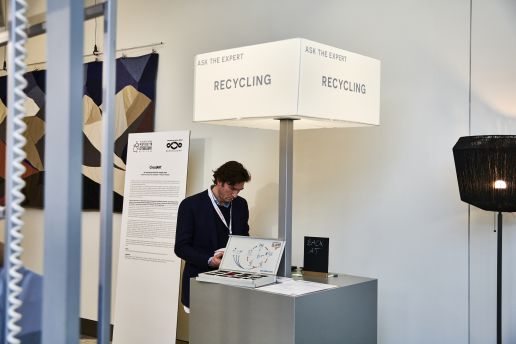
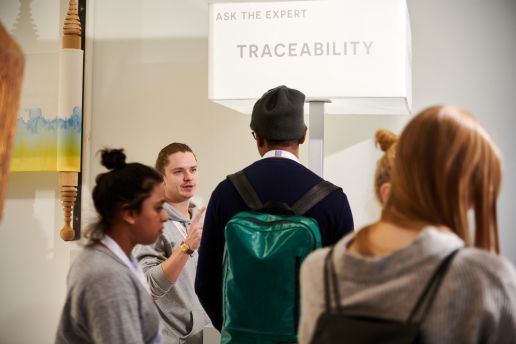
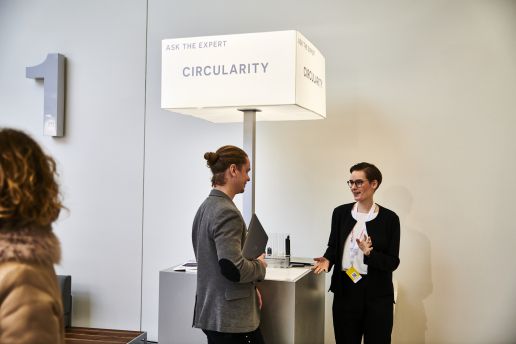
Through direct discussions, visitors gained valuable know-how, insights into topics and current solutions for both sustainable and innovative processes along the value chain:
CIRCULARITY // FIBERS & MATERIALS // MARKETING & COMMUNICATION
RECYCLING // RESPONSIBLE PROCESSING // SOCIAL RESPONSIBILITY // TRACEABILITY
We would like to thank all experts who shared their knowledge and experience with the visitors during the three days of the MUNICH FABRIC START:
CIRCULARITY
Ina Budde | Circular.Fashion
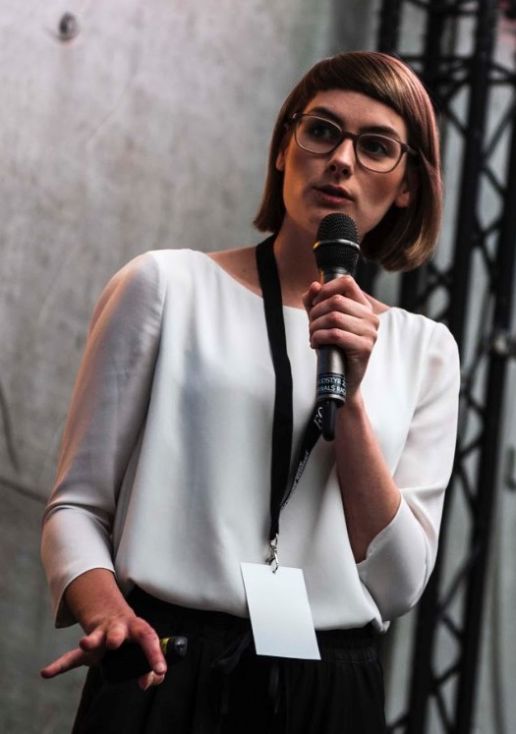
The future thinking designer Ina Budde (MA Sustainability in Fashion) is lecturer, entrepreneur and co-founded circular.fashion. Since 2013 she is working with circularity in fashion and textiles and in 2017, she founded the sustainable change agency circular.fashion together with the business developer Mario Malzacher. Additional to her work with circular.fashion, where she consults fashion brands such as HUGO BOSS and H&M, she gave workshops and lectures for sustainable design at several international universities such as RMIT Melbourne, KEA Copenhagen, RCA London, HAW Hamburg, ESMOD and AMD Berlin. Ina Budde is founding member of the global Open Source Circular Economy association and co-initiated in this frame the first Circular Textile Challenge Berlin. Her work was selected as sustainable innovator 2014 by LAUNCH Nordic and received the NEXT ECONOMY AWARD 2015 and the Global Change Award by the H&M Foundation 2019.
circular.fashion is a sustainable change agency creating product- and system innovation for a circular economy in fashion and textiles. The Circular Design Software supports fashion brands to design circular and sustainable products in a lean and efficient process, with the access to an extensive material database. With the circular.fashion system powered by the circularity.ID, a scannable label in the garment, all actors within the value chain are interconnected by giving each garment an identification, making sure that every step of a garment’s life cycle positively influences circular systems of fashion – so that the products of today become the resources of tomorrow. This system has been selected as one of the sustainable innovations 2014 by LAUNCH Nordic and received the NEXT ECONOMY AWARD 2015. Collections developed with the Circular Design Software received the lavera Green Fashion award 2015 and the Bundespreis Ecodesign Award 2017.

EXPERT INSIGHTS ON:
> Circular Materials: Identify recycling opportunities for your textiles and products
> Design for Longevity and Cyclability: Create products of endless value
> circularity.ID Open Data Standard: Leveraging data and technology for circularity
> Recycling partner network: Enable a reverse supply chain for fibre-to-fibre recycling
> Full Cycle product journey: Capture the products value through recommerce & recycling
Contact: info@circular.fashion
FIBRES & MATERIALS
Thomas Stegmaier | DiTF
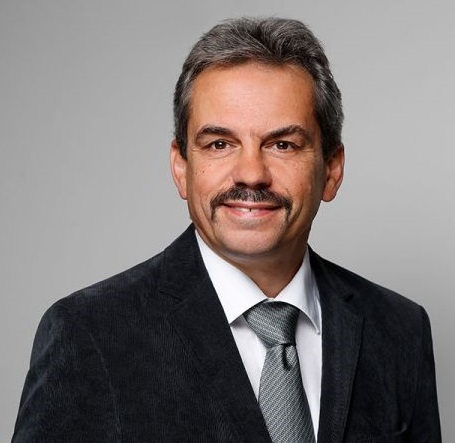
Thomas Stegmaier is Development Manager in research at the DITF (Deutsches Institut für Textil- und Faserforschung Denkendorf). After studying Textile Machine Construction and Control Technology of Machine Tools, he received his doctorate in Process Engineering at Stuttgart University. He then received his postdoctoral lecture qualification in Construction Engineering at Institute for Technology Karlsruhe. Since 20 years now, he works as Development Manager for technical textiles, surface technology, environmental technologies, bionics at DITF.
The DITF (Deutsches Institut für Textil- und Faserforschung Denkendorf) forms the largest textile research centre in Europe with more than 300 scientific and technical staff. As the world’s only textile research facility and covering an area of more than 25,000 m², the DITF work right across the textile production and value chains. Since 1921, they have been across all the major fields within textiles. They are among the leading research institutions worldwide.
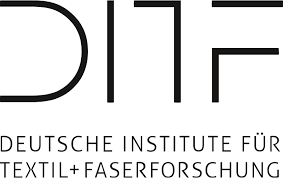
EXPERT INSIGHTS ON:
> What does organic really mean for textiles?
> Limitations of natural fibres
> Ways of recycling textiles
> Composites: Pitfalls for recycling
Contact: info@ditf.de
MARKETING & COMMUNICATION
Alex Vogt | KERN. Consulting
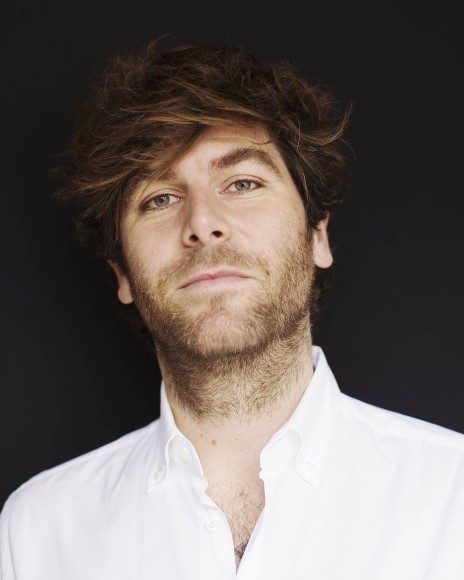
Communications and strategy consultant Alex Vogt sees the complex of innovation management and corporate responsibility as an essential prerequisite of future-orientated business thinking. He initially studied politics and history at the Goethe University Frankfurt and then came into contact with the sportswear and fashion industry through the surf and skateboard scene, going on to gain an MBA specialising in the textile industry at the private LDT Nagold Academy for Fashion Management. Before joining the communications consultancy KERN as a partner and devoting his full attention to the topics of innovation and CR, Alex Vogt held senior positions in fashion retail and marketing.
KERN. designs individual solutions to communicate forward-thinking business content. Go with the flow, let your mind wander and immerse yourself in a new world… KERN. is a strategy and communications consultancy with a focus on innovation and corporate responsibility. KERN. supports companies in the development and implementation of strategies, as well as working as communications consultants and journalists and creating complete graphic design packages. Its clients include companies from the retail and manufacturing sectors, associations and trade shows.

EXPERT INSIGHTS ON:
> Hot Spot- / Impact Analysis; Distinction
> Corporate Responsibility Language
> Moderation of Stakeholder Dialogue (B2B)
> Sustainability Reporting (Text, Layout, Production)
> Communication Concepts & Implementation (internal & external)
> Marketing, Campaigns & PR (B2C)
Contact: hello@kern.consulting
RECYCLING
Paul Doertenbach | I:CO

Paul Doertenbach is Head of Marketing and Sales at I:Collect GmbH, the parent company of I:CO. He joined the company 9 years ago after completing a bachelor at Munich Business School, and a MBA at University of Buckingham.
Restorative and regenerative by design, a circular economy industry approach can lead to positive change. Pre-loved clothing and shoes would circulate in closed product and material cycles and be used continuously in the manufacturing of new products. At I:CO, we are committed to this vision. Our innovative take-back system is helping make it a reality and is used successfully by many companies around the world today.

EXPERT INSIGHTS ON:
> Textile Recycling Today and Tomorrow
> End of Life Procedures
> Change Process
> Fibre 2 Fibre
> Closed Loop / Open Loop Recycling
Contact: info@ico-spirit.com
RESPONSIBLE PROCESSING
Tobias Glatt & Fabian Walda | bluesign® ACADEMY
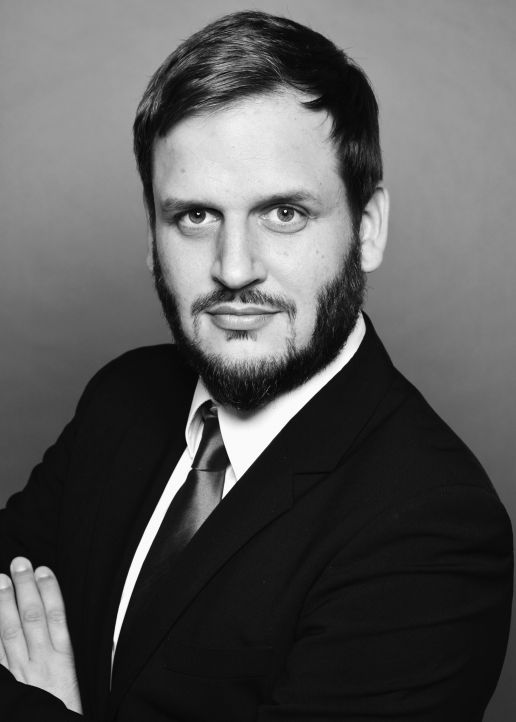
Tobias Glatt is Geographer, Auditor Integrated Management Systems and Energy Management Systems. He works for bluesign since 2009 in different roles and conducted more than 60 audits around the globe with focus on Environment, Health & Safety in textiles and accessories companies. Besides, he follows several sustainability projects, e.g. carbon footprinting, water footprinting and recycling.
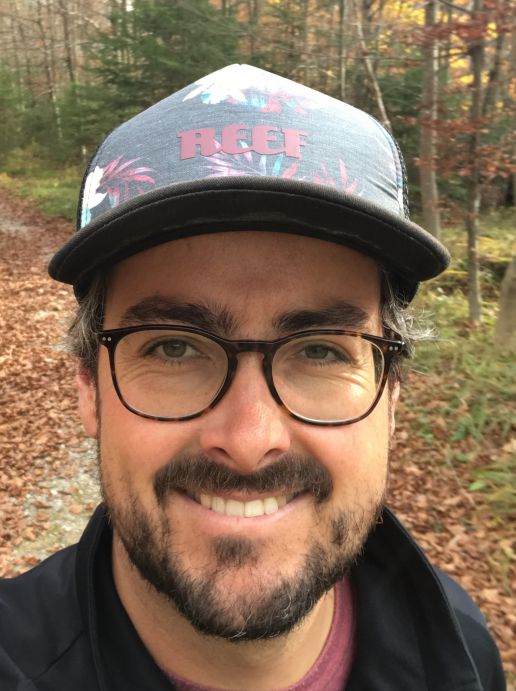
Fabian Walda is Dipl. Ing. In Textile and Clothing Technologies. Since 8 years, he is active at bluesign in technical orientated fields such as audits, international audit supervision and field trainings and lastly R&D projects around sustainable manufacturing.
At the bluesign® ACADEMY, we generate and disseminate knowledge on various EHS and sustainability topics in relation to textile and chemicals industry. This unique knowledge is the basis for improving and expanding the bluesign® SYSTEM as well as our services to stakeholders and the community: Training and lectures, support and customized solutions, consultancy, studies and projects as well as further development of the bluesign® CRITERIA and substance restrictions.

EXPERT INSIGHTS ON:
> Chemicals Management
> Resources, Consumer Safety
> Best Available Techniques and/or Environmental Friendly Processes
> Occupational Health & Safety
SOCIAL RESPONSIBILITY
Mark Starmanns | BSD Consulting
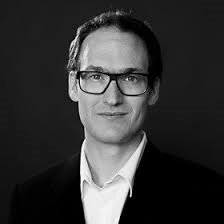
Mark Starmanns works as senior consultant at BSD Consulting Switzerland. His specialist areas are sustainable strategy, sustainable supply chain management, sustainability standards and living wages. He has been working on the topic of fair fashion in research and practice for more than 15 years. Besides working as Sustainability Consultant at BSD Consulting, he received a PhD on corporate responsibility in global clothing supply chains and is the co-founder of the fair fashion information platform GET CHANGED!
BSD Consulting – business. sustainability. development – founded in Switzerland in 1998, we are an international network of consultancy firms providing knowledge and solutions for sustainable development. BSD is now part of ELEVATE, the leading business risk and sustainability solutions provider.

EXPERT INSIGHTS ON:
> Do I need a social Code of Conduct?
> Which social standard is the right one for me?
> Is it enough to outsource monitoring of my social standards?
> I produce in Europe – do I need to care for social standards?
> How do I implement living wages?
> How do I do a human rights risk assessment?
TRACEABILITY
Philipp Mayer | retraced
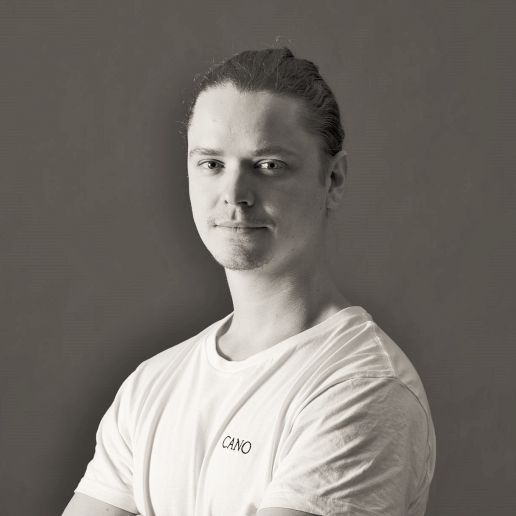
Philipp Mayer is the Co-Founder of retraced and the footwear brand CANO. He lives the entrepreneurial spirit: Directly after graduating from Fontys International Business School in Venlo, the Netherlands, he co-founded the CANO Clothing Company in 2016 and two years later the transparency platform retraced.
Little is known about how our favourite clothing items are made, under what labour conditions, which raw materials are used, and how the process is affecting our planet. End-consumers across the globe are starting to demand reliable, verified supply chain information in order to make educated choices about the products they consume. Retraced is a blockchain-powered transparency platform that allows brands to unlock relevant supply chain information and share their verified efforts in sustainability and ethics with their consumers.

EXPERT INSIGHTS ON:
> Supply Chain Transparency
> Blockchain Verification
> Sustainability
> Consumer Trust
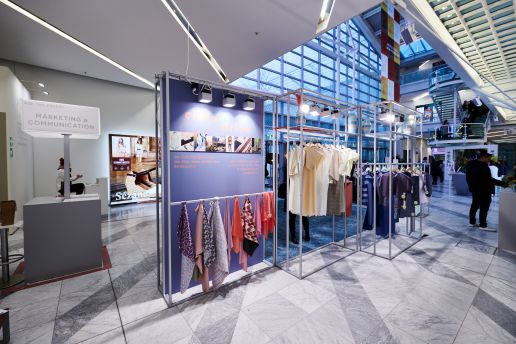
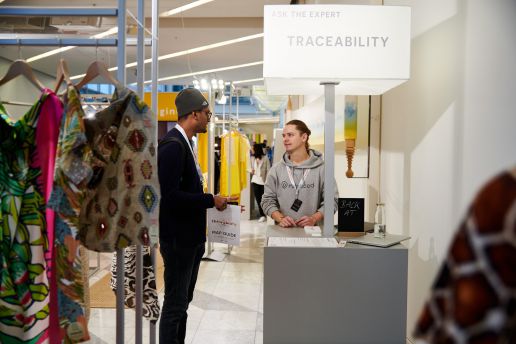
The Organisers of MUNICH FABRIC START in Conversation
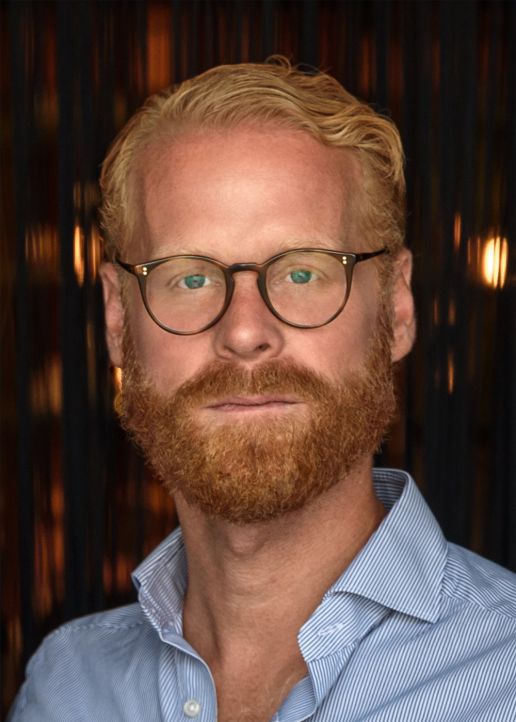
About sustainability, digitalization, transparency, the increasing demand for information and the desire to inspire.
In many areas of the textile and fashion industry, a rethinking is currently taking place. How much does this reorientation change the image of MUNICH FABRIC START?
Sebastian Klinder: We have anticipated the upcoming changes and reacted extremely progressively, very early on. With the creation of KEYHOUSE four years ago, we took a clear position and emphasized that sustainability and digitalization will change processes. That a new awareness in dealing with resources must be demanded. And most importantly, that progress and sustainability can only work in harmony. Against this background, the trade fair has developed further. Step by step. Very consistently. But always with the support and in partnership with our exhibitors and visitors. There is a great understanding and acceptance, which we experience time and time again and of course we are very grateful for this.
Frank Junker: I would like to add at this point that all these challenging issues are also about credibility. About certainty. We rely on transparency and information. We do not dictate, but instead we inspire and motivate. We want to inspire our exhibitors and visitors with the topics of the future and awaken understanding. This is also what the current leading theme ‘THRIVABILITY’ stands for.
How do you as a trade fair deal with the topic of sustainability?
Sebastian Klinder: We have set up special information points for the upcoming trade fair, staffed by specialists who will provide information and answers to fundamental questions. In addition, we have developed a very comprehensive icon label system that ensures the samples in the forums and areas are as ‘transparent’ as possible by outlining the sustainable and technical functions. This system will also provide information about the composition, origin and properties of the fabrics and additionals.
Frank Junker: We also work consistently and with great conviction to take sustainable measures in terms of equipment. For example, we use recyclable carpets, reusable, colour-neutral and high-quality materials for stand construction and in the forums. Only water-soluble colours without additives are used. The light sources are primarily energy-saving. In terms of gastronomy, we take care to source locally from the region.
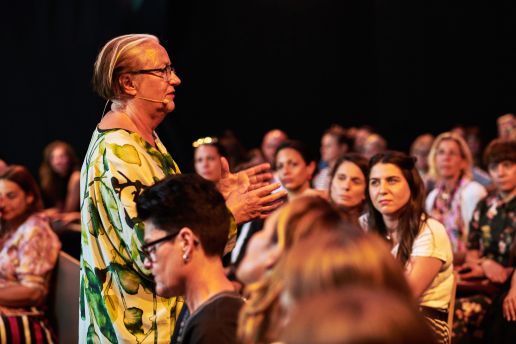
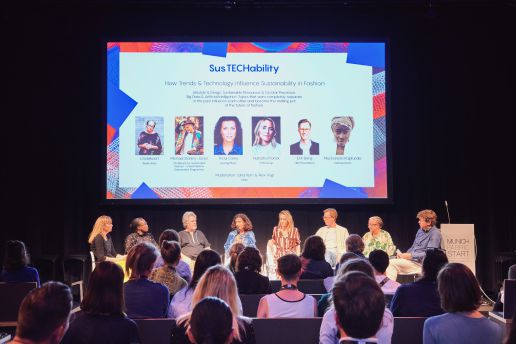

Is there a risk that with all these overarching themes, fashion, trends and the product… is neglected?
Sebastian Klinder: Amidst current media coverage and the numerous strategically dominated discussions, the impression can easily arise that the heart of MUNICH FABRIC START, namely the fabric and the fashion trends launched with it, will be pushed into the background. This is not the case. In our thinking, in all our forums and installations everything revolves around the fabric and its significance for one of the largest and most important industries worldwide – only much more complex than in the past. More than ever, it is about an integrated offering that is now broader. Ultimately, it’s about circular economy in the best sense along the entire textile pipeline reaching retailers and thus also the consumer. It is important to depict this complexity.
MUNICH FABRIC START offers a very comprehensive event programme supported by experts.
Frank Junker: These proven seminars, one of them being the trend lecture by Li Edelkoort which will now take place for the sixth time, as well as the numerous international panel discussions and keynotes in KEYHOUSE and BLUEZONE are attracting more visitors from season to season. This large and positive response shows very clearly how important high-quality, condensed information is – and thus ultimately communication. We at MUNICH FABRIC START see ourselves as initiators of a business platform for the industry. Our task is to initiate holistic cooperations and to set impulses. And last but not least, in cooperation with strong partners, to provide answers to the questions of tomorrow.

The Nurture Room: Interview with Pauline van Dongen
LET'S TAKE CARE OF FASHION TOGETHER.
During the previous edition of MUNICH FABRIC START, you presented the Smart Textile Pop-up Lab at the KEYHOUSE. What was it all about?
The aim of this Pop-up Lab was to familiarize people with smart textiles, and in particular those created by printed electronics. Through my work at Holst Centre (a leading Dutch R&D centre), I see the potential of printed electronics for the textile industry. These printed electronics are thin and stretchable and the printing process allows for a modular design approach. Moreover, they are made using familiar processes, namely through screen-printing conductive inks on flexible substrates like TPU and then heat bonding these smart “trims” onto textile. Visitors of the Pop-up Lab could see this process up close to better understand it and be inspired by the possibilities.
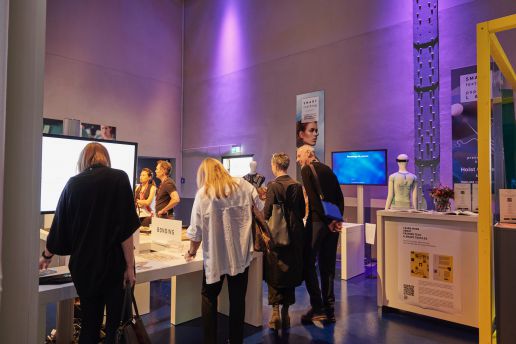
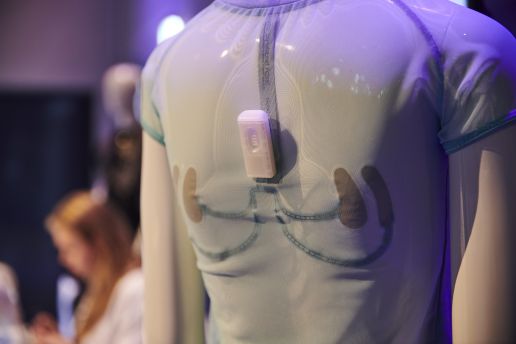
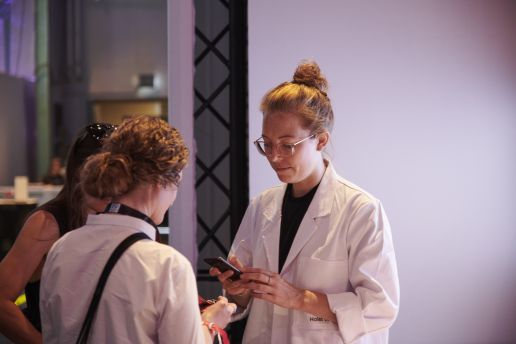
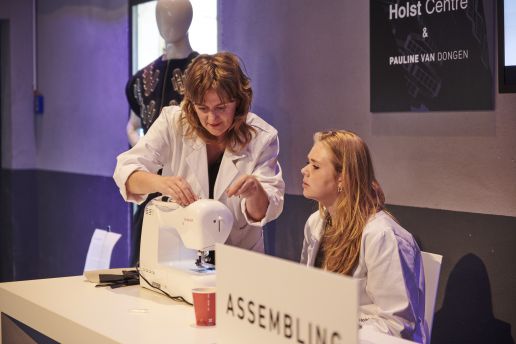
This time, visitors of the fair can book a (free) session in “The Nurture Room”. View the timetable and register here.
What will they experience there?
After having successfully shown the process of printing electronics and their integration in textiles, it is time for the next step. The Nurture Room is a space to reflect and to meet likeminded people who share a wish to do things differently within the fashion industry. It invites open dialogues addressing the urgency to create new relationships between humans and the clothing they wear.
The aim of the sessions at The Nurture Room is to not only inspire participants, but to ensure that they can follow up their inspiration with concrete actions once back in the office. You will be guided through the session by wearable technology experts: Pauline van Dongen and Marina Toeters. By booking a session on a particular topic, such as workwear, outdoor clothing or casual wear, you can tap into a wealth of knowledge and simultaneously help shape the direction of developments in the field of wearables.
The sessions are meant to connect companies covering the full value chain, in order to collectively contribute to new product developments. Together, we will discuss ways to embed technologies into clothing in ways that can nurture people and improve their wellbeing. Visitors will be able to encounter the latest developments that fall within this scope, such as MYSA 2.0: a “relax shirt” that guides the wearer through breathing exercises that can be felt through subtle vibrations along the spine.

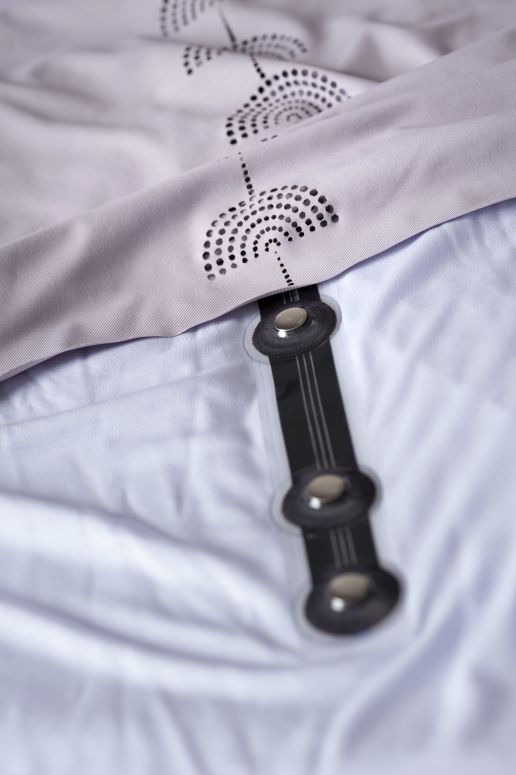
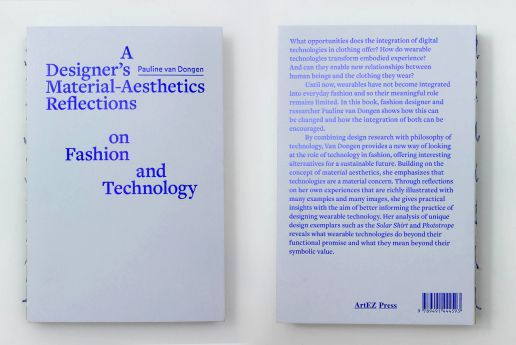
Can you tell us a bit more about your own research and how the idea of The Nurture Room relates to it?
In my own research, I focus on the way clothing mediates between our bodies and the world. Our clothes shape how we relate to the world, they actively shape our perceptions and our actions. I look at how we can strengthen our relationship and emotional bond with clothing and, by wearing clothing, with others and with the environment. When our clothes become active and responsive, how will this affect the human-garment relationship for example? My research shows that when we create wearables, we need to take into account the full set of experiential qualities of the garment, and not just the functionality of the technology. I extensively describe this approach in my recent book “A Designer’s Material-Aesthetics Reflections on Fashion and Technology”. It also includes practical guidance for designers and engineers who wish to develop wearables.
As a designer working between the fields of fashion design, textile innovation and technology, I understand these different worlds and know how to connect them. I would like people entering this space to think very consciously about what they want to develop and for whom, what new values the product will bring to people and how they incorporate considerations relating to the well-being of the planet. This ambition is reflected in the concept of The Nurture Room.
Why did you call it “The Nurture Room”?
Nurture is care that is given to someone while they are growing and developing. The term reflects the care with which we should all treat industry. In the context of “nature vs nurture”, the word “nurture” describes the influence of learning and other influences from one’s environment. I experienced how many new things I had to learn when I made a turn to wearables. In wanting to change the system as well as my own position and attitude as a designer, I also noticed that I needed to shed some of the premises that formed the basis for my fashion education. This learning and unlearning are processes that not many people in the industry take the time for or get the time for. While new perspectives are so desperately needed right now. So, to help facilitate this, our main message is: “Come and nurture yourself, by expanding your knowledge in the area of wearable technology.”
Visit The Nurture Room at MUNICH FABRIC START on February 4-6 2020 in Munich, Keyhouse, Booth #34
Due to the limited number of places available for the free individual workshops, we kindly ask you to register by mail to Chantal Gräff at cgr@munichfabricstart.com.
WORKSHOP TIMETABLE
Tuesday, 4th February
11.00 – 11.45 am: sports & activewear
14.00 – 14.45 pm: wool & tailoring
Wednesday, 5th February
11.00 – 11.45 am: workwear
14.00 – 14.45 pm: intimates
16.00 – 16.45 pm: outdoor
Thursday, 6th February
12.00 – 12.45 pm: casualwear



